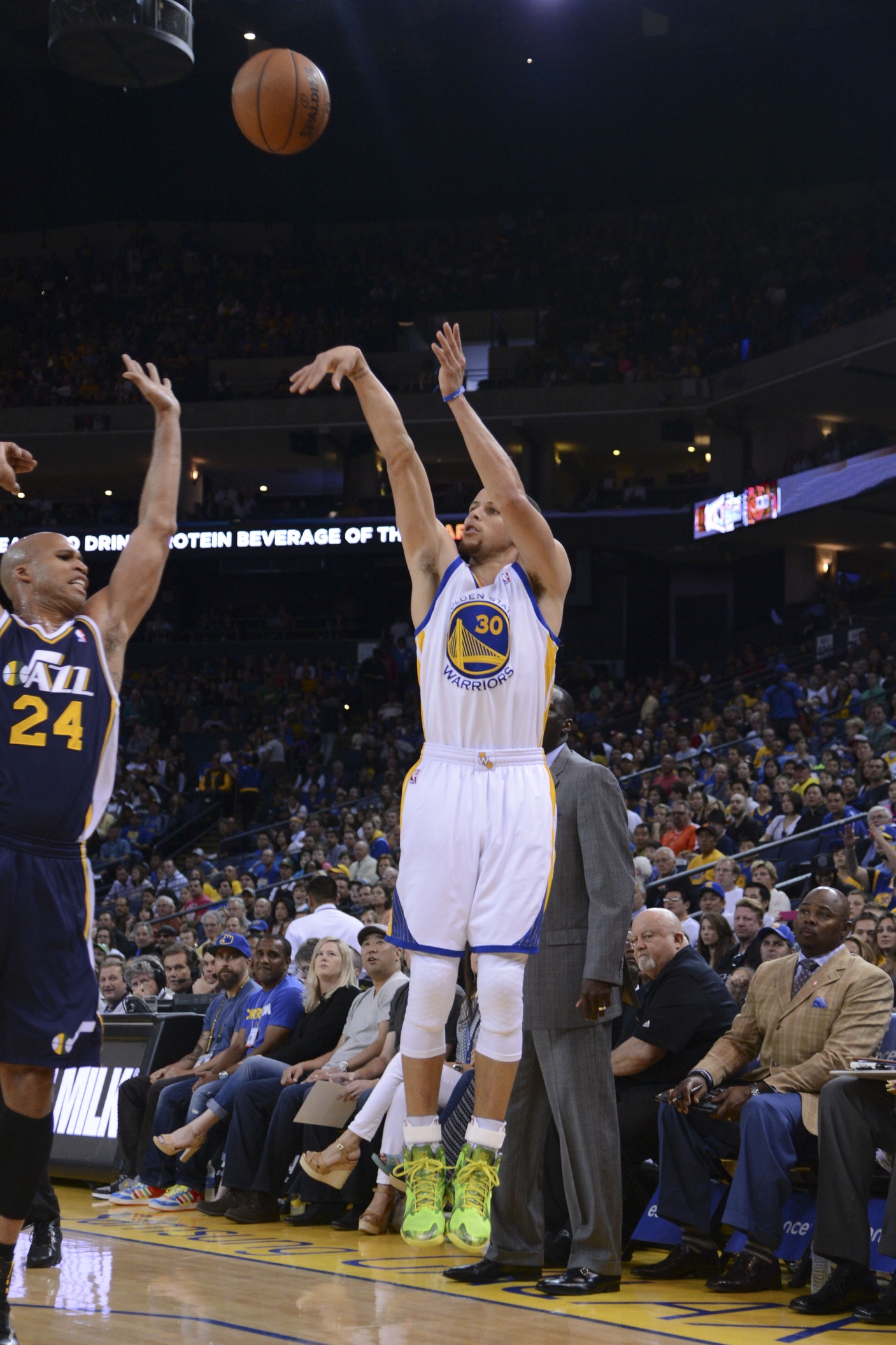Warriors fans collectively held their breath last Thursday when Curry reached for his thigh. What was later diagnosed as an adductor strain will keep Curry sidelined for at least a few games.
In his absence so far, the Warriors have defeated the Nets and lost to the Clippers. It isn’t a terrible stretch, considering the Clippers were fresh off of downing the upstart Bucks in their last game.
But what exactly does the Warriors’ offense look like without Curry?
It’s not great.
No offense looks the same without its star player and former MVP. But the Warriors, in particular, look sharply different with and without #30 on the court.
The centerpiece of Steve Kerr’s motion offense is Stephen Curry. The read-and-react nature of the offense is because of the quick thinking, pull-up ability, and passing of Stephen Curry. Most of the offense and the constant screening the Warriors run is predicated on Curry’s ability to draw defenders wherever he’s moving, whether on or off the ball.
But when Curry is injured, even with Durant on the floor, the Warriors’ offense looks merely like a shell of its former self.
Late last season, Curry was injured for the final 17 games of the regular season. The Warriors lost 10 of those 17 games and limped into the playoffs. Many considered the Warriors vulnerable, and some coaches around the league even preferred to play the Warriors in the 1st round with KD but no Steph.
The Warriors defeated the Spurs in the 1st round because of Kevin Durant and the Spurs’ lack of offensive weapons.
But Curry’s absence was felt during that stretch. It is again felt this season as the Warriors will be forced to play multiple games without Steph.
In the small sample size of 2 games this season, in the 17 games at the end of last season, and any time Steph has had to miss time in the past 4 years, the Warriors have struggled. Their offense, which is often compared to a well-oiled machine, sputters and coughs and comes screeching to a stop.
In Saturday’s game vs. the Nets, the Warriors struck gold with Quinn Cook’s emergence and his 27 points on 11-16 shooting. In Monday’s game vs. the Clippers, Durant was vintage KD, with 33 points and a triple-double. Klay Thompson, however, scored 31 points on a wildly-inefficient 31 shots. Outside of those 2, the next highest-scoring Warrior was Andre Iguodala with 14 off the bench.
And the championship-level offense was nowhere to be seen Monday night, especially in OT, when Durant fouled out. Even with 2 All-Stars in Draymond Green and Klay Thompson on the floor, silly fouls, dropped passes, and missed layups summed up the final 5 minutes in the Warriors’ loss.
A team like the Warriors can have all the star power they want. But the engine that drives the locomotive is Stephen Curry.
Curry brings a constant 3-point threat as soon as he crosses half-court, he is in constant movement off the ball, hunting for his spot, and he has excellent court vision. They’re part of what makes him deadly and what makes his teammates better.
According to ESPN.com’s advanced stats, Curry was 2nd in the NBA in ORPM (offensive real plus-minus) last season. ORPM attempts to measure a players’ on-court impact on his team’s offensive performance, based on his points scored per 100 possessions. Curry’s ORPM was 2nd in the league, behind only MVP James Harden.
Basically, it means the Warriors can put the ball in the basket pretty easily when Curry is on the basketball court.
Then there are the intangibles that don’t show up on the stat sheet. Curry’s expanded 3-point range has defenders hugging up on him at all times. This opens the door for Curry to set screens and completely take the defense out of position, or if the defense overplays, he can cut back door to the basket.
The Warriors like to have Curry as the screener because the defense is forced to communicate to stay with him. If both defenders, in a brief moment of fear and indecisiveness, jump out at Curry at the 3-point line, the man Curry screened for can roll to the rim and get a free path to bucket. This action can be seen constantly over the course of a 48-minute game.
Without Curry though, the Warriors, especially in crunch time, are relegated to KD isolation plays, and players hunting to find Klay Thompson, rather than sticking with their offensive principles of player movement and ball movement.
The Warriors boast 4 All-Stars. But if you take Curry out of the equation? The 2016 Finals against LeBron’s Cavs brings to mind a perfect scenario where the Warriors still had Klay Thompson and Draymond Green (for most of the series), but struggled with a less-than-100% Curry, who was hampered all series by lingering ankle issues. Curry’s inability to get past Kevin Love was a huge factor in Game 7.
That’s why the Warriors went out and lured Durant away from OKC that summer. Durant was to serve as the much-needed insurance policy in case of injuries.
And here we are again. With Curry injured, and with the Warriors offense again sputtering in crunch time. And while KD definitely provides a lift and an offensive spark, the Warriors offense can only reach astronomic heights with their engine.
They just need to find enough answers while their engine lays dormant on the sidelines, waiting until it can power up once again.
Add The Sports Daily to your Google News Feed!
